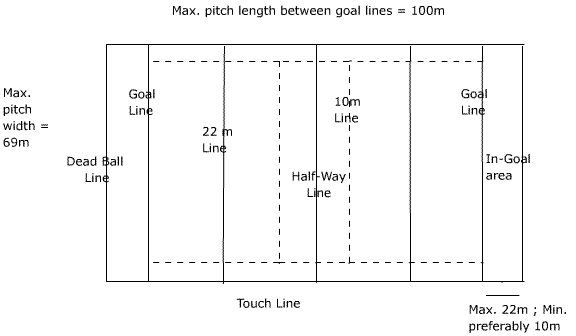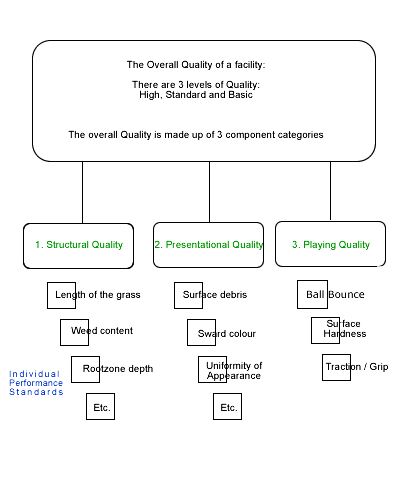Rugby (Union) is typically played on a rectangular pitch with the following sizes:
- Length: maximum 100m for the pitch, plus up to another 22m to the dead ball line. Typically 10m would be allowed for this 'in-goal' area.
- Width: maximum 69m.
An average sized pitch may be 90m in length (with an additional 10m at each end for the 'in-goal' area) by 60m width = 6,600m².
The playing season is typically September through to May.

Quality
Pitches should ideally be
- even throughout, with no undulations or depressions;
- firm, giving good grip (traction) for players, especially during a scrummage;
- covered with a dense sward of desirable grasses;
- well drained;
and should provide appropriate cushioning for players due to impacts from tackling and diving.
To ensure that a rugby pitch is maintained correctly, not only during the playing season but throughout the whole of the year, a number of individual performance standards are likely to be set. The combination of these standards determines the overall quality of the rugby pitch.
Diagram to Illustrate Quality and Individual Standards

The setting of these performance standards provides a means of objectively assessing the quality of the rugby pitch.
Most users wish to have a first class rugby pitch, however, the costs involved in materials, machinery and especially the skills of a qualified and experienced groundsman do not come cheap. Realistically, the aim is for a rugby pitch which is comfortable to play on, provides for a safe contest and is managed in a cost-effective manner.
The actual maintenance cost for a rugby pitch will depend on a number of variables, in particular what is actually included within the so called true cost as some costs are hidden within other charges, especially when comparing local authority costs. A like for like comparison can be notoriously difficult to achieve.
Unlike fine turf areas, which will have fairly similar maintenance inputs to each other, rugby pitches can vary considerably in standards and the maintenance input required because they can range from a general practice area through to a premier rugby pitch.
